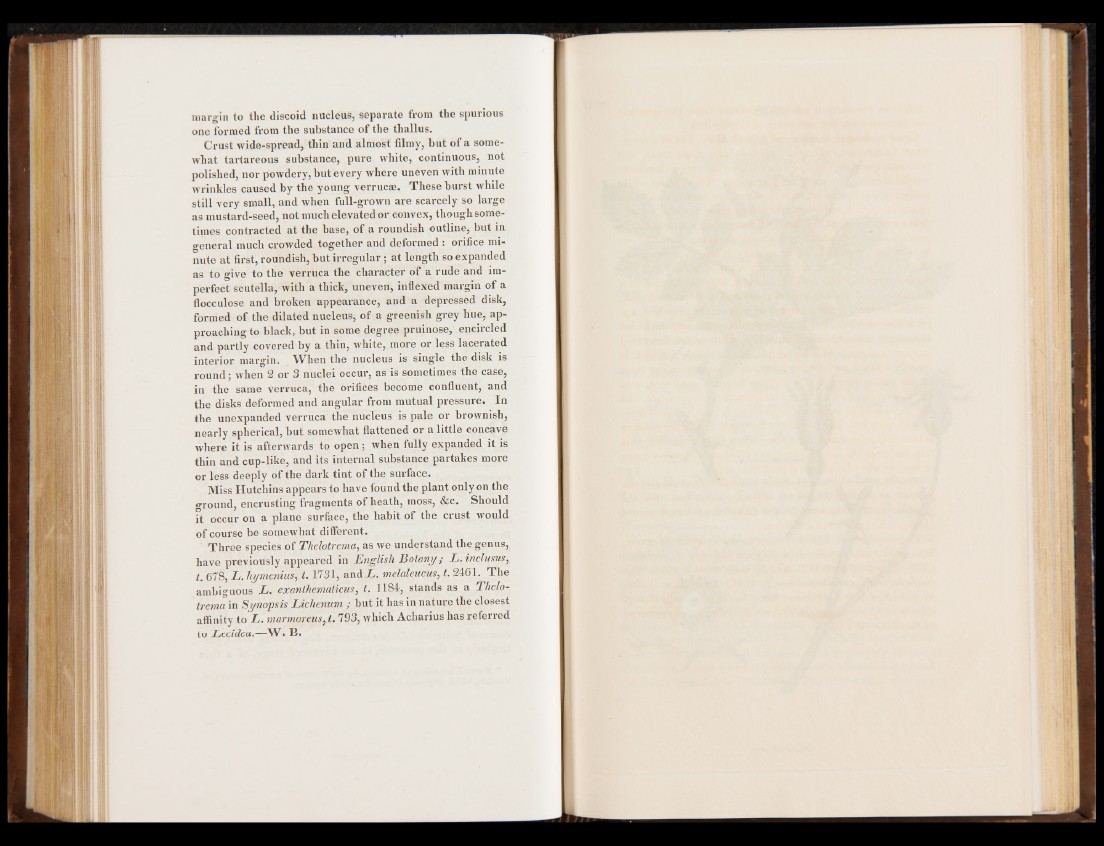
margin to the discoid nucleus, separate from the spurious
one formed from the substance of the thallus.
Crust wide-spread, thin and almost filmy, but of a somewhat
tartareous substance, pure white, continuous, not
polished, nor powdery, but every where uneven with minute
wrinkles caused by the young verrucae. These burst while
still very small, and when full-grown are scarcely so large
as mustard-seed, not much elevated or convex, though sometimes
contracted at the base, of a roundish outline, but in
general much crowded together and deformed : orifice minute
at first, roundish, but irregular; at length so expanded
as to give to the verruca the character of a rude and imperfect
scutella, with a thick, uneven, indexed margin of a
flocculose and broken appearance, and a depressed disk,
formed of the dilated nucleus, of a greenish grey hue, approaching
to black, but in some degree pruinose, encircled
and partly covered by a thin, white, more or less lacerated
interior margin. When the nucleus is single the disk is
round; when 2 or 3 nuclei occur, as is sometimes the case,
in the same verruca, the orifices become confluent, and
the disks deformed and angular from mutual pressure. In
the unexpanded verruca the nucleus is pale or brownish,
nearly spherical, but somewhat flattened or a little concave
where it is afterwards to open; when fully expanded it is
thin and cup-like, and its internal substance partakes more
or less deeply of the dark tint of the surface.
Miss Hutchins appears to have found the plant only on the
«■round, encrusting fragments of heath, moss, &c. Should
it occur on a plane surface, the habit of the crust would
of course be somewhat different.
Three species of Thelotrema, as we understand the genus,
have previously appeared in English Botany; L.inclusus,
t. 678, L . hymenius, t. 1731, and L . melaleucus, t. 2461. The
ambiguous L . exanthematicus, t. 1184, stands as a Thelotrema
in Synopsis Lichenum ; but it has in nature the closest
affinity to L . marmoreus, t. 793, which Acharius has referred
to Lecidea.—W . B.